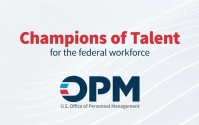The Great System Crash of American Education
Imagine, for a moment, you're running the most complex operating system in the world. It’s ancient, built on decades of patchwork code, and it controls the financial futures of 45 million people. Now, imagine that in the same week, you issue two completely contradictory commands. Command One: Begin a process to permanently delete the files of 2 million users. Command Two: Simultaneously open negotiations to sell the entire hard drive to a private corporation.
The system would crash. It would be a catastrophic failure.
This isn't a hypothetical. This is exactly what is happening right now with the American student loan system. In a dizzying display of cognitive dissonance, the Trump administration is, on one hand, sending out long-awaited forgiveness notices to borrowers on Income-Based Repayment plans, while on the other, its top officials are in talks to sell off the entire $1.6 trillion federal loan portfolio to private investors. When I read these conflicting reports, my first thought wasn't political—it was systemic. It was the kind of spectacular, high-level system failure that I used to study at MIT.
This isn't just policy whiplash; it's the death rattle of an obsolete model. We are witnessing a system so fundamentally broken, so burdened by its own internal contradictions, that it has begun to tear itself apart. And frankly, it's the most hopeful sign I've seen in years.
The details are almost surreal. After a long pause, two million Americans who have dutifully made payments for 20 to 25 years are finally receiving emails with the subject line: "You're eligible to have your student loan(s) discharged" (Student-loan forgiveness is back on for 2 million borrowers). For these people, this is a moment of profound, life-altering relief. A promise made decades ago is finally being kept. Yet, at the very same moment, senior officials at the Treasury and Education Departments are exploring the sale of "high-performing" loans to private equity (Trump administration considers sale of federal student loan debt).
Think about what that means. The government is essentially trying to run two programs at once: one for debt cancellation and one for debt commodification. This is like a car with one foot on the gas and one foot on the brake—it’s a recipe for a total breakdown. The experts, of course, see the absurdity. Preston Cooper at the American Enterprise Institute is blunt: "I really don’t see a scenario here where taxpayers come out ahead." Eileen Connor of the Project on Predatory Student Lending points out the only way a sale makes sense for a private buyer is if they can squeeze borrowers harder, stripping away the few protections federal loans still offer.

But what if we're asking the wrong questions? What if the debate over whether to forgive or sell is a distraction from the real issue?
An Operating System Built for a Bygone Era
The problem isn't the individual policies, as chaotic as they are. The problem is the core architecture. The entire federal student loan program is a piece of legacy technology—a financial mainframe designed for the 20th century, now buckling under the demands of the 21st. It was built on a simple premise: a college degree was a golden ticket to a stable, middle-class job that could easily pay back a modest loan.
That world is gone. Today, education is more critical than ever, but the economic landscape is vastly more complex. The system wasn’t designed for a gig economy, for rapid technological displacement, or for credentials that need constant updating. It treats education as a one-time consumer purchase financed by personal debt, rather than what it has actually become: essential public infrastructure for a knowledge-based economy.
This is the kind of breakthrough that reminds me why I got into this field in the first place. We're not just talking about finance; we're talking about the flow of human potential. Trying to fix this system with tweaks like income-driven repayment plans or by selling it off for parts is like trying to run modern AI algorithms on a Commodore 64. The hardware simply can't support the software. The administration’s own statement, that they are focused on "the long-term health of the portfolio" instead of "loan forgiveness," gives the game away. They're trying to save the machine, not the people it was built to serve.
So, what happens when a system this massive and this critical enters into chaotic failure? It creates a vacuum. It forces a conversation we have desperately needed to have for thirty years. Is a mountain of personal debt really the best way to power the minds that will invent our future? Can you imagine if we funded our national highway system by putting a tollbooth on every single on-ramp and charging drivers for the full cost of the pavement under their wheels? Our economy would grind to a halt. Yet, this is precisely what we do with our intellectual infrastructure.
The current chaos—the sheer, breathtaking contradiction of forgiving debt for some while trying to sell the rest—is the beautiful, messy, and necessary precursor to a total system reboot. It's the moment the screen freezes, the error messages pile up, and everyone in the room is finally forced to admit that the old code is broken beyond repair.
Time for a System Reboot
Let's be clear: the current administration's actions are not part of some grand, visionary strategy. They are the flailing, contradictory spasms of a dying paradigm. But in that chaos, I see an incredible opportunity. We are finally being forced to confront the truth: the student loan system isn't a program to be tweaked; it's a relic to be replaced. We are at an inflection point, a moment where we can move beyond the tired debate of forgiveness versus repayment and start designing a new architecture from the ground up—one that treats education not as a burden to be carried, but as an investment in our collective future. The system is crashing. Good. Let's build what comes next.










